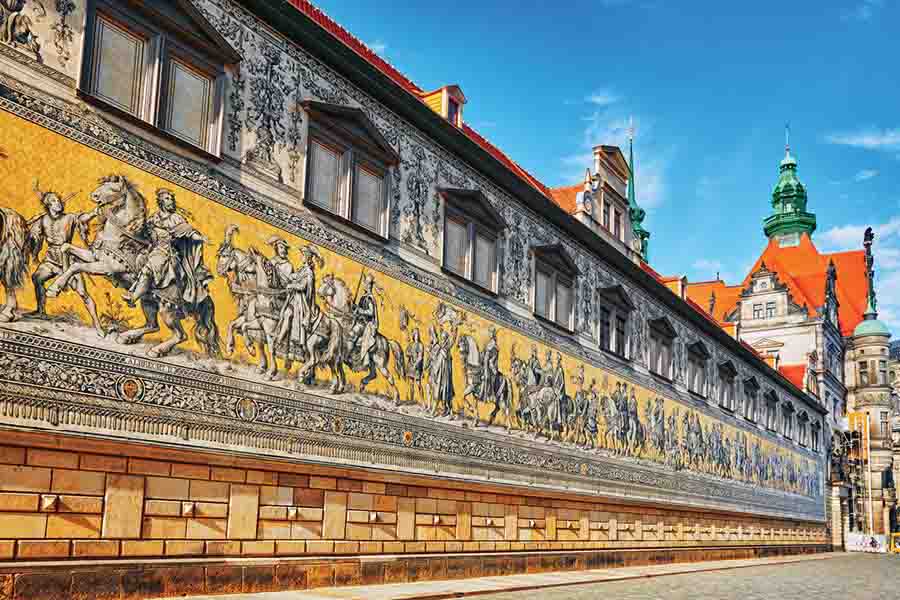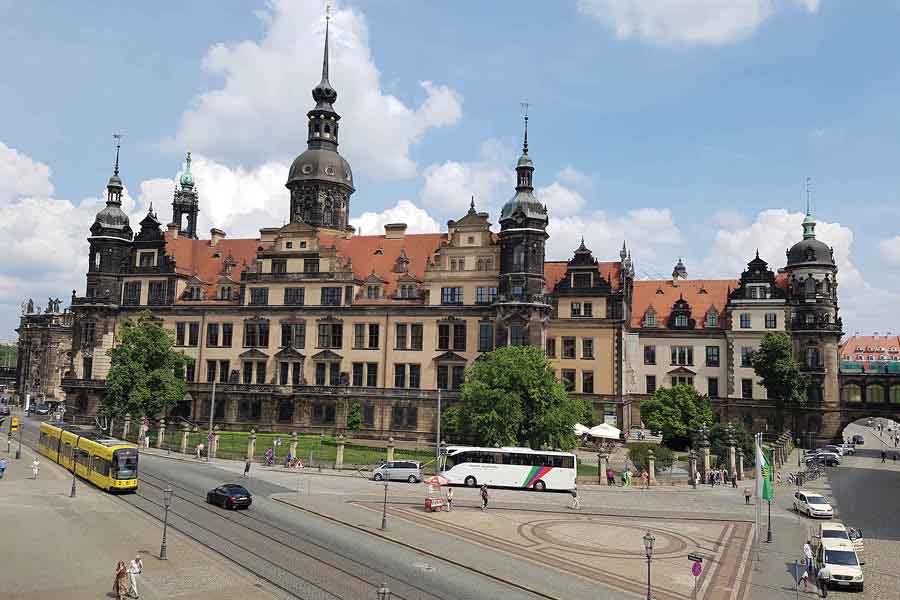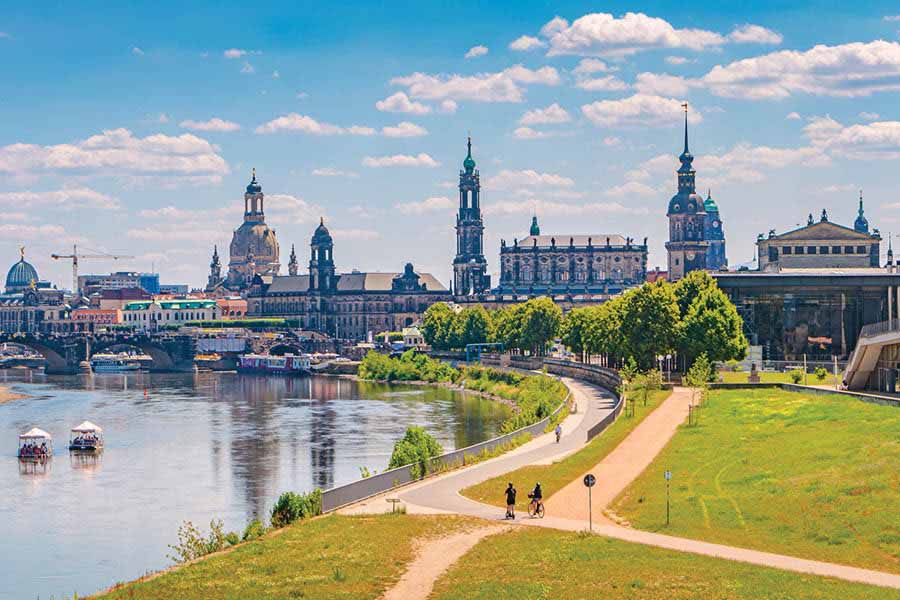Being a KGB agent in the late 1980s, towards the end of the Cold War, couldn’t have been an easy job. It’s why one agent sought comfort in the stunning views in the German city of Dresden, after a hard day’s work. While those visits to enjoy the views of the iconic Dresden panorama might have been planned on impulse, the visit in 2006 was certainly not unplanned. It was a state visit and the agent I’m talking about is Vladimir Putin, President of Russia. Putin’s Dresden years (1985-90) are believed to have influenced his worldview. As the Berlin Wall crumbled and protestors began to storm the KGB local headquarters in Dresden, Putin’s call for help to Moscow was met with a response that he never forgot – “Moscow is Silent”, and shaped his current persona as a strongman.
Europe’s most charming cities

The famous Dresden panorama, as captured by the author
Ashwin RajagopalanBut, it wasn’t Vladimir Putin’s Dresden legends that brought me here. The best travel plans are the ones you never make. It was one of these impulses that led me to one of Europe’s most charming cities on a rare day when I arrived early to board a bus – from Berlin to Prague. I spotted a bus that was headed to Dresden. I altered plans, cut short my planned stay in Prague and chose to spend 24 hours in Dresden, that’s sort of halfway (about three hours away from both cities) between Berlin and Prague.
It wasn’t purely accidental, as a student I remembered my German teacher speak at length about the famous Dresden panorama and how this city earned its ‘Florence of the North’ moniker. Not surprisingly, the first image I snapped at Dresden was a panorama shot of the Aldstadt or the original old city. Sweeping views are a given in this city. My next stop was Brühschule Terrase – the Balcony of Europe, located on the south bank of the Elbe.
Built from the rubble

Ruins of the Church of Our Lady on in Dresden, which was destroyed by a bomb attack in February 1945
ShutterstockFor most people Dresden still brings back memories of the Dresden bombings of 1945 when Allied bombings reduced this city and all its landmarks to rubble. The rebuilding process took place in two phases, first as part of the German Democratic Republic and then post reunification when the city truly came alive as one of Europe’s cultural and art capitals. Nowhere is Dresden’s new lease of life more evident than the Frauenkirche, Dresden’s most iconic landmark. This 18th-century church returned in 2005 after a 11-year facelift that cost 182 million Euros. You can spot many of the 8,000 stones that were gathered from the rubble (thanks to a darker hue) that were reused in the walls.
Baroque architecture at its best

Nowhere is Dresden’s new lease of life more evident than the Frauenkirche, Dresden’s most iconic landmark
ShutterstockSituated along the River Elbe, Saxony’s capital doesn’t just boast of one of Europe’s most stunning panoramas – its architectural landmarks are among Europe’s finest examples of Baroque architecture. This form of architecture (that was marked by new explorations of form, light and shadow) truly took off in post-Renaissance Italy in the late 16th century. The Frauenkirche envisioned by German architect George Bahr, was constructed between 1726 and 1743 and is considered one of the standout examples of Baroque design. It features some of the quintessential elements of the Baroque era that represented a gigantism of proportions. Along with the Frauenkirche, the reconstruction of the city’s original downtown – the Neumarkt – complete Dresden’s grand Baroque revival. The Renaissance-era Neumarkt has been an integral part of Dresden since 1548. This square’s charm stems from its typical gabled houses. The Dresden bombings of the 1940s were not the only time this city suffered, the Seven Years’ War of 1746 to 1753 that involved almost every major European power also took a toll on the city. Neumarkt also acquired a simpler late-Baroque style after it was rebuilt post this war.
Panorama mode

Procession of Princes – the world’s largest porcelain mural
ShutterstockFrauenkirche, with its stone bell dome is the most imposing building along the Dresden panorama but I was equally floored by the city’s Procession of Princes – the world’s largest porcelain mural. Dresden is a city where I found myself switching to panorama mode quite often. The 101-metre mural, tiled with Meissen porcelain, links Neumarkt with the Schlossplatz square and features 35 princes, counts and kings in a mounted procession from the House of Wettin, that lorded over Saxony. Originally a sgraffito, the artwork was transferred to Meissen porcelain tiles between 1904 and 1907 to prevent the work from fading. Some 24,000 tiles were used to complete the transfer. The Dresden Castle or Royal Palace is an integral part of the city panoramas. This landmark has been restored (after damage during Allied bombings) to its 18th Century glory that combines Baroque and Neo-Renaissance styles. It’s a treasure trove of art with a fine collection of prints, drawings and photographs. While the exterior is decorated in neo-Renaissance style, the large courtyard displays Renaissance-style sgraffito paintings.

The Dresden Castle or Royal Palace is an integral part of the city's panoramas
Ashwin RajagopalanThe Aldstadt’s compact size allows you to pack multiple stops (I’d suggest planning a trip between March and November when it’s warmer and easier to explore the city on foot). I rushed through meals, choosing instead to cram two more stunning architectural landmarks into my 24-hour stopover. The first was the Santissimae Trinitatis Cathedral, the 18th Century Baroque-style ecclesiastical building and the Semper Opera house that has a long history of premieres including masters like Richard Strauss and Richard Wagner. Dresden’s architecture can get quite overwhelming, especially on a frenetic 24-hour trip. It’s why I went back to the spot across the Elbe and took in the city’s stunning panorama all over again. It’s a sight I will never forget.








